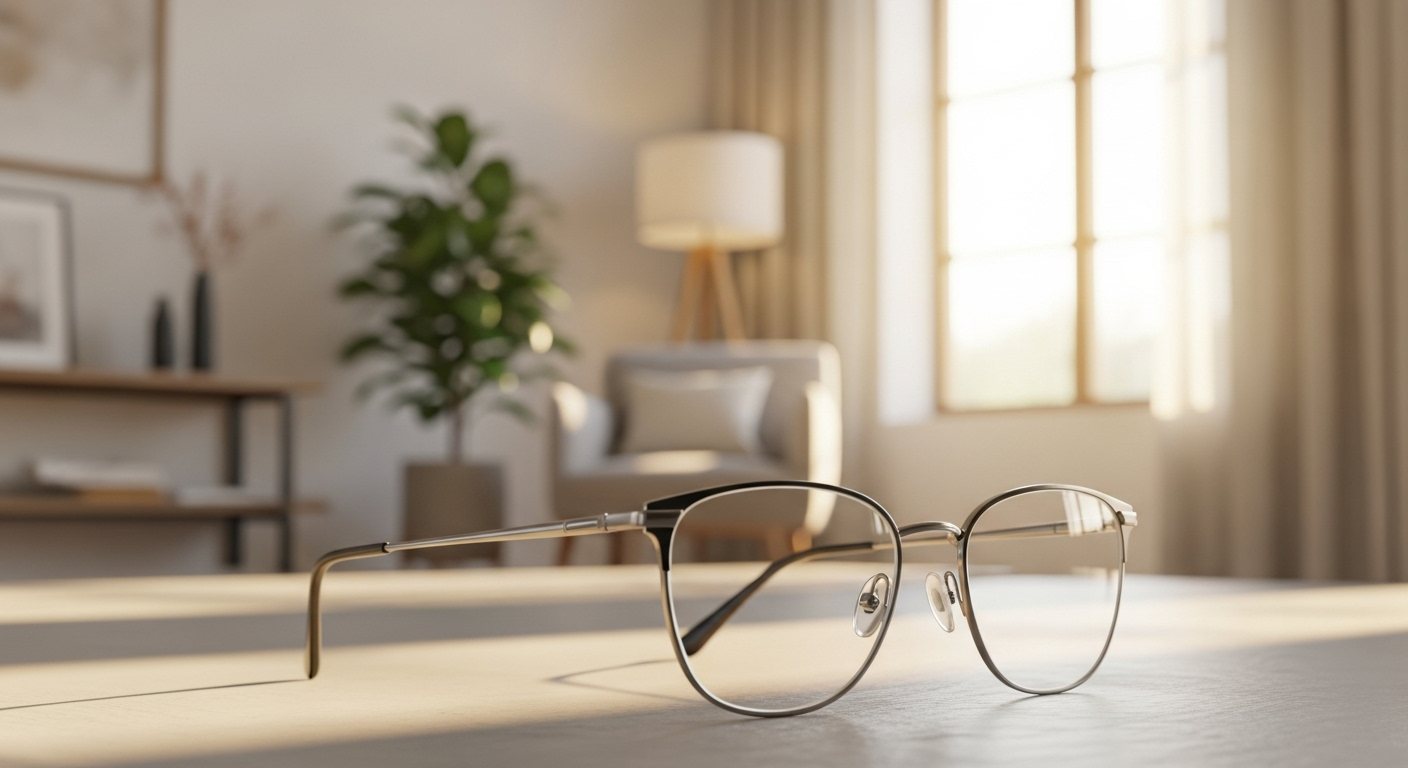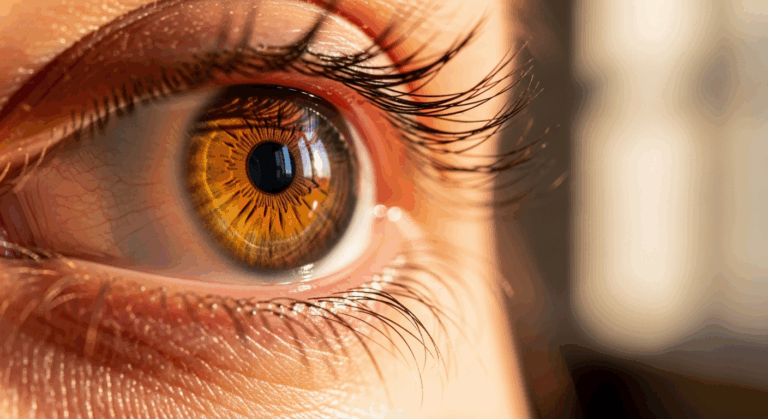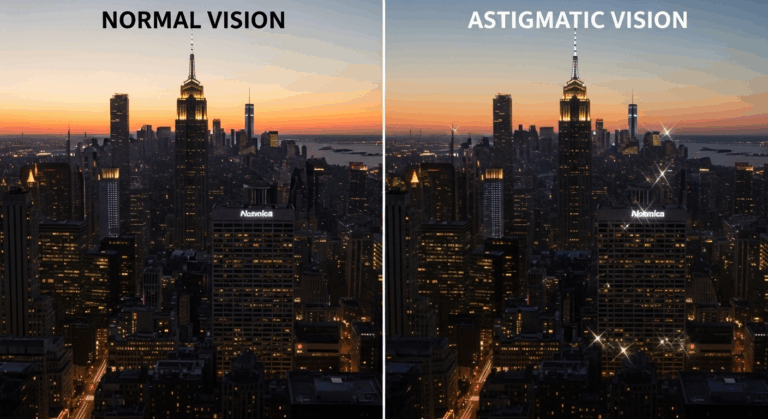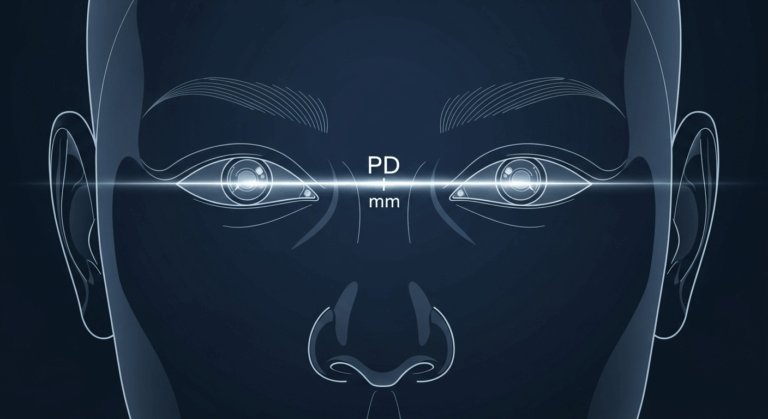You’re not alone if you’ve squinted at an eye chart and left with the number 20/25 stuck in your head. In plain terms: 20/25 vision means you can see at 20 feet what a person with “normal” vision can see at 25 feet. It’s slightly worse than 20/20, but it’s often still functionally fine. We get asked this a lot in clinic — “Do I need glasses?” — so let’s walk through what 20/25 actually means, when to worry, and what to do next.
What is 20/25 vision?
How the Snellen fraction works
The Snellen fraction (like 20/20, 20/25) compares your visual acuity to a standard. The top number is the testing distance (usually 20 feet). The bottom number is the distance at which a person with normal acuity could read the same line. So 20/25 = you need to be 20 feet away to read letters that a typical person could read at 25 feet.
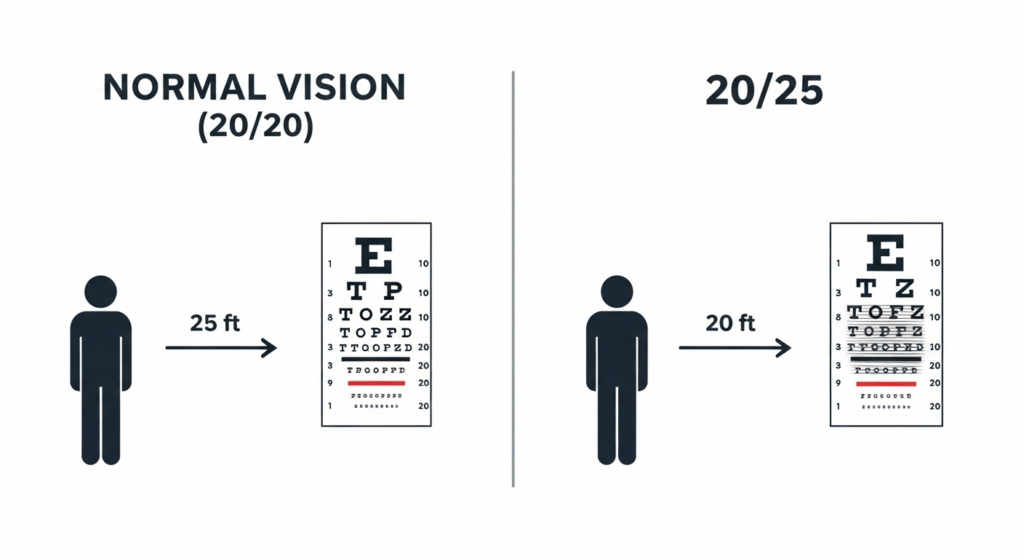
Visual acuity vs. overall vision
Remember: visual acuity (sharpness) is only one aspect of vision. Depth perception, peripheral vision, contrast sensitivity, and near vision matter too. You might have 20/25 but still struggle with night driving or small-print reading.
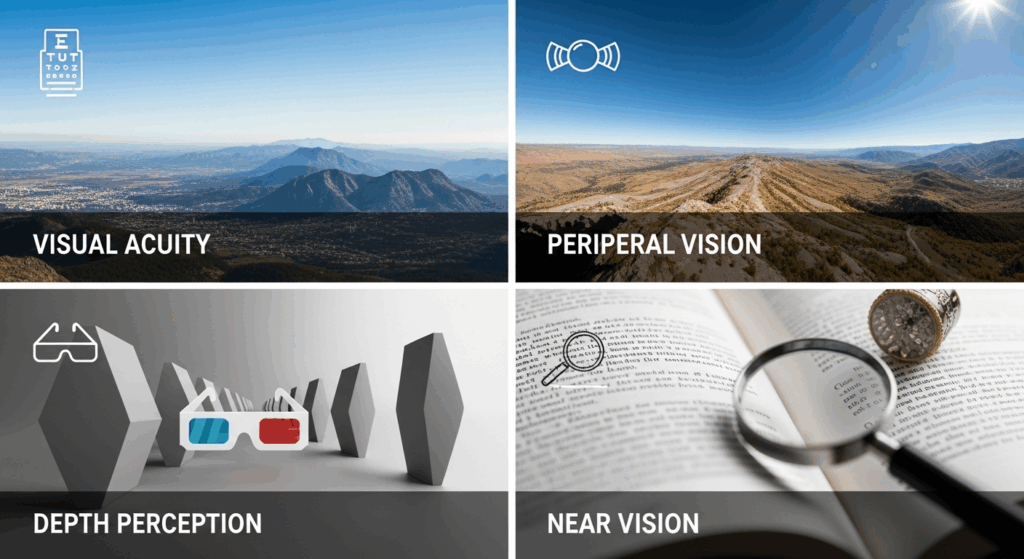
Is 20/25 vision good?
Short answer: usually, yes — but context matters.
Functional implications
- Most people with 20/25 perform daily tasks comfortably: reading signs, watching TV, and working on a computer.
- You may notice slight blur on very fine print or distant signs. Think of it like a camera with a tiny amount of softening — everything’s mostly clear but not razor-sharp.
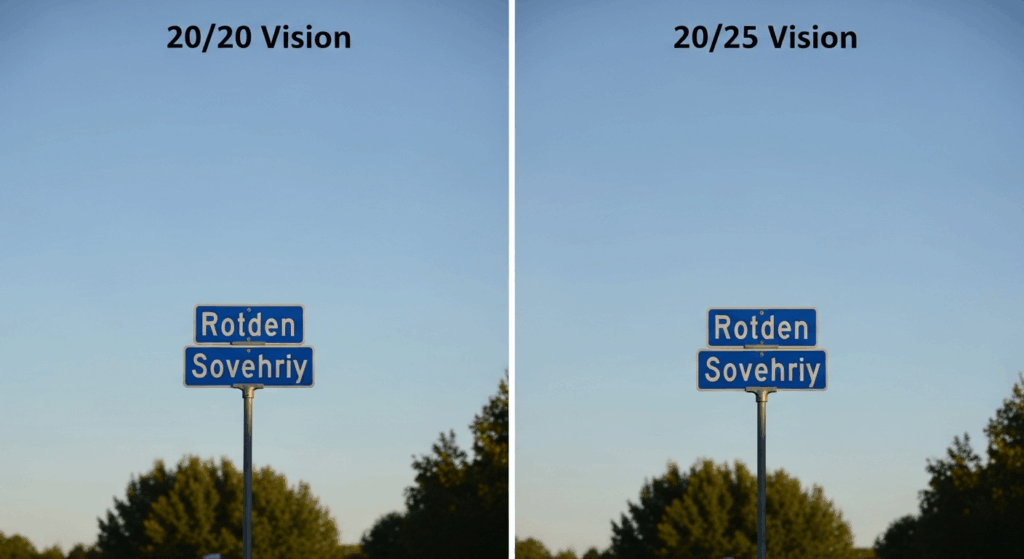
When 20/25 becomes a concern
- If your eyes feel strained, you get frequent headaches, or your work/hobbies require perfect distance acuity (e.g., pilots, some athletes), it’s worth addressing.
- If acuity has dropped from your baseline (say from 20/15 to 20/25), get checked — a change can indicate a developing refractive error or ocular health issue.
Is 20/25 vision better than 20/20?
No — 20/20 is better. The smaller the bottom number, the better the acuity. So:
- 20/20 = standard “normal” vision
- 20/25 = slightly worse than standard
Think of it like running: a 5K completed in 20 minutes is better than 25 minutes. Same idea here.
Does 20/25 vision need glasses?
Short answer: often not, but sometimes yes — depends on symptoms and needs.
When glasses/contact lenses help
- If the 20/25 is due to a correctable refractive error (myopia, hyperopia, or astigmatism) and you’re symptomatic (eye strain, headaches, difficulty driving at night), correction will likely make you more comfortable.
- If you need better acuity for work, school, or specific tasks, prescription lenses can sharpen that last bit of blur.
When you probably don’t need correction
- If you’re comfortable, have no symptoms, and your lifestyle doesn’t demand perfect distance acuity, many eye care providers will recommend observation rather than prescribing for a mild, asymptomatic 20/25.
- For children, though, even small refractive errors can affect learning — so err on the side of evaluation and correction when kids are involved.
Is 20/25 vision farsighted or nearsighted?
Short answer: 20/25 is neither inherently farsighted nor nearsighted — it’s just a measure of acuity.
How refractive errors relate
- Myopia (nearsightedness): you see near objects clearly but distant ones blur. If 20/25 is due to myopia, wearers will typically have difficulty with distance tasks.
- Hyperopia (farsightedness): distance may be clearer than near; small amounts of hyperopia can still give near blur or eye strain, especially in younger people who accommodate.
- Astigmatism: causes blur at all distances and can produce a 20/25 measurement.
Only a refraction (eye test with lenses) tells you which refractive error — if any — is causing 20/25 vision. The number itself doesn’t tell the direction.
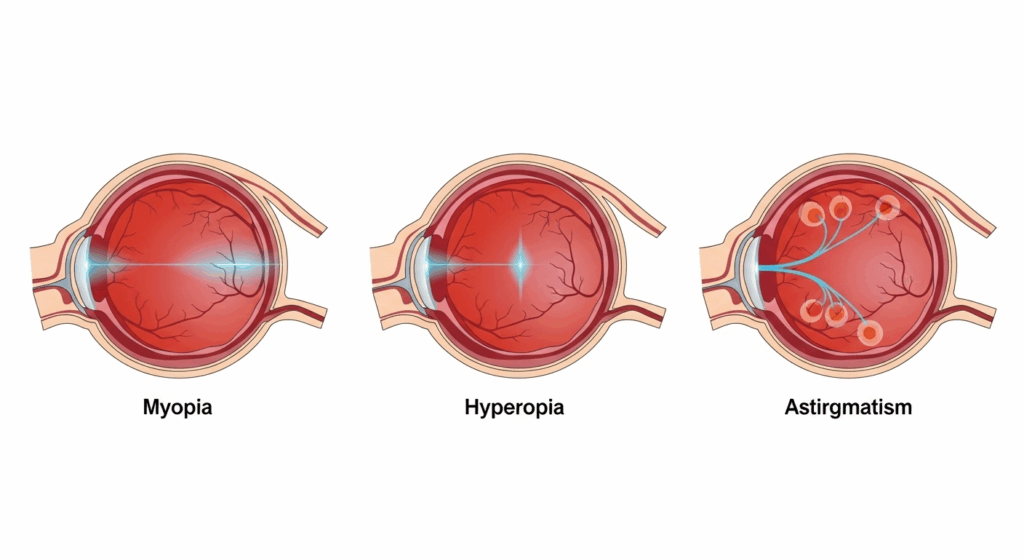
What causes someone to have 20/25 vision?
Common causes
- Mild refractive error (early myopia, low astigmatism).
- Slight residual blur after cataract surgery or corneal irregularities.
- Dry eye or surface irritation — even temporary dryness can reduce acuity by a line or two.
- Fatigue or poor testing conditions (lighting, attention).
When it’s a red flag
- Sudden drop to 20/25 or worse, or distortion in vision (waviness), can signal retinal issues or other ocular pathology — get an exam promptly.
How eye care professionals evaluate 20/25 vision
Typical tests during an exam
- Visual acuity (distance and near) with and without correction.
- Pinhole test: a quick way to see if reduced acuity improves with pinhole — improvement usually means a refractive problem.
- Refraction to determine glasses/contact prescription.
- Slit-lamp exam for the front of the eye and dilated retinal exam for the back of the eye.
- Additional tests (IOP, OCT, visual fields) if health concerns arise.
Treatment and correction options
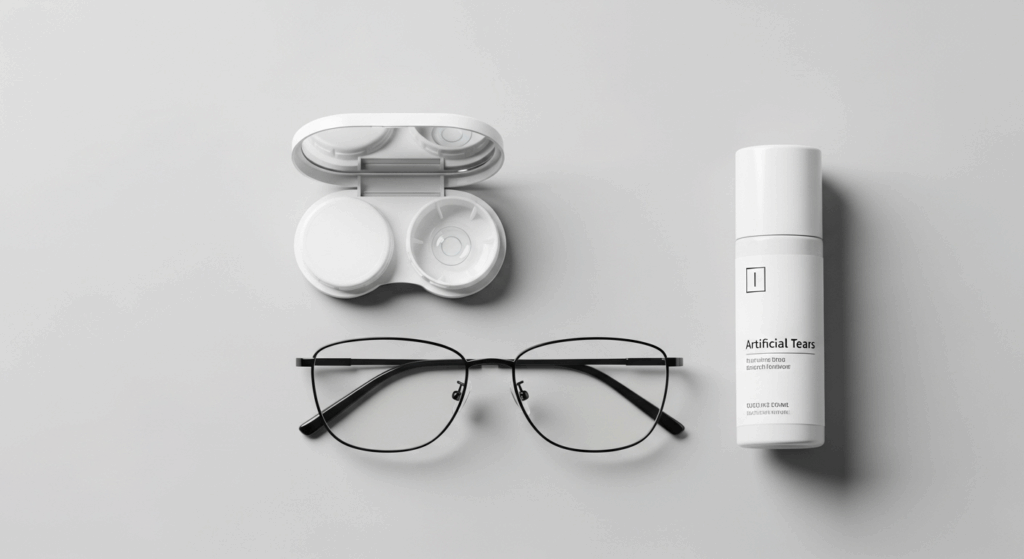
Non-surgical
- Glasses: simplest and reversible. A small prescription can sharpen 20/25 to 20/20 or better.
- Contact lenses: gives a wider field of clear vision; good option if you prefer not wearing glasses.
- Environmental changes: better lighting, reading distance adjustments, blinking breaks for dry eye.
Surgical and advanced options
- Refractive surgery (LASIK, PRK): can permanently reduce or eliminate dependence on glasses if you’re a candidate.
- Corneal procedures or lens exchange: for specific corneal or lens-related causes.
Always discuss risks and benefits with an ophthalmologist.
Practical advice — what to do if your chart shows 20/25
- If you’re symptomatic (headaches, strain, trouble driving) book a comprehensive eye exam.
- If asymptomatic and comfortable, monitor annually — many clinicians won’t prescribe for a mildly reduced acuity unless requested.
- For kids: get prompt evaluation — even small deficits can affect learning and binocular vision.
- If vision changed quickly or you notice distortion/flashes/floaters, seek urgent care.
Preventive tips to protect and possibly improve vision

- Take regular screen breaks (20-20-20 rule: every 20 minutes look at something 20 feet away for 20 seconds).
- Manage dry eye with artificial tears and good blink habits.
- Wear sunglasses outdoors to reduce UV exposure.
- Get routine eye exams — early detection is key.
Conclusion — the bottom line on 20/25 vision
20/25 vision is slightly below the standard 20/20 but is usually functionally fine. Whether it’s “good” depends on your symptoms, job, hobbies, and whether the change is recent. We often tell patients: if it bothers you or limits what you do, treat it. If you’re comfortable, keep an eye on it and get regular checkups — especially for children and if changes occur suddenly.
